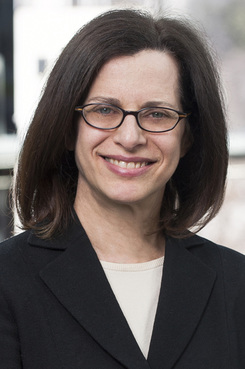Is $400K for SCOTUS Clerks a Bonus Too Far?
“These firms can no longer credibly argue that they are compensating these former clerks for the additional education and training obtained during their Supreme Court clerkships," one legal scholar says.
November 14, 2018 at 12:53 PM
6 minute read
The original version of this story was published on National Law Journal
 U.S. Supreme Court building in Washington, D.C.
U.S. Supreme Court building in Washington, D.C.Supreme Court veteran Carter Phillips of Sidley Austin remembers vividly the first time he offered a hiring bonus to a Supreme Court law clerk seeking a job at his firm. It was 1987, when bonuses were rare, and he tendered $10,000.
Thirty-one years later, the prevailing hiring bonus for Supreme Court clerks is $400,000—up from $300,000 in 2015. And that does not include salaries. If the trend continues, the clerk bonus will soon approach twice the annual salary of the justices they work for. Associate justices are paid $235,000, and the chief justice gets $267,000.
“Things have changed a bit over the past 30-plus years,” Phillips said. “I am now hoping my grandchildren get clerkships. It will be $1 million by then.”
Firms such as Jones Day, which announced Tuesday that it hired 11 clerks from last term's “class,” take the number in stride, even as in the case of Jones Day if it amounts to a $4.4 million investment. The firm has recruited 47 Supreme Court clerks since 2012. The firm declined to discuss its compensation practices.
 Beth Heifetz
Beth HeifetzLast year Beth Heifetz, leader of Jones Day's issues and appeals practice said, “From the top of the firm down, there is full support for Supreme Court clerk recruiting. Every year we have the same conversation within the firm. And every year we come back to try to hire as many terrific clerks as we can.”
Michael Scanlon, hiring partner at Gibson, Dunn & Crutcher, which recruited two Supreme Court clerks from last term, said “the market appears to have settled” at $400,000. He attributes the escalating bonus to the fact that “the competition is great” for the small number of talented attorneys—38 or so—the Supreme Court turns out every year.
Other factors help explain the bonus boom, which seemed to accelerate in earnest a decade or so ago.
The specialization and prestige of Supreme Court advocacy encouraged firms to ramp up their appellate practices. The intense pace and the varied content of the yearlong clerkship make most clerks a prescreened safe bet for firms to hire, sure in the knowledge that they can handle hard work, long hours and a range of legal issues.
And then there is the growing prominence of Supreme Court clerks. Former clerks are everywhere, it seems—from general counsel to Apple Inc. (Katherine Adams) to president of the University of Virginia (James Ryan) to Fox News host (Laura Ingraham).
With the arrival of Brett Kavanaugh last month, for the first time in history a majority of justices are former clerks: Roberts, Stephen Breyer, Elena Kagan, Neil Gorsuch and Kavanaugh. As of next January, there will be four U.S. senators who once clerked at the high court: Richard Blumenthal, Ted Cruz, Mike Lee and Josh Hawley. And 44 percent of President Donald Trump's nominees to appellate judgeships are former Supreme Court clerks.
Some court-watchers are questioning the jaw-dropping growth of the clerk hiring bonus, skeptical of what the firms are actually buying.
“It's become absurd,” said Todd Peppers, who has written books about Supreme Court clerks. “These firms can no longer credibly argue that they are compensating these former clerks for the additional education and training obtained during their Supreme Court clerkships. Yes, these former clerks are very smart. That being said, this is about access and insight into the individual chambers.”
U.C. Hastings College of the Law professor Rory Little, himself a former clerk, said, “If I were a clerk today and knew that I could get an extra almost half-million dollars, I would feel very careful about the firms' Supreme Court cases while clerking. Seriously, an ethics expert needs to look at this carefully, under the current ethics rules and concerns we adopt for lawyers and judges in other situations. All 37 clerks or more feel that same 'tug,' even if it is implicit or unconscious.”
“When the numbers get so high—in terms of the bonus itself and the numbers of hires going to one firm—it unavoidably raises concerns about what is being purchased and the meaning of public service,” Harvard Law School professor Richard Lazarus said in 2015. Lazarus, reached this week, said he stands by those remarks, adding that “a vast majority” of the Jones Day hires are likely to leave the firm in a few years. “Jones Day is paying a lot of money for a photograph,” he said.
A tally last year found that at least 10 of Jones Day's 36 clerk hires had left the firm, countering the widely held notion that clerk hires take their bonus money and run. A 2014 Marquette Law Review article stated that the clerk bonuses had drawn many more clerks to private practice than in decades past but that “the vast majority of clerks leave their first jobs within the first few years after they leave the court.”
Jones Day's Heifetz said that has not been the case at her firm.
“Our experience has been that most of the clerks who come to Jones Day following their Supreme Court clerkships stay for many years,” she said. “Some of them get the opportunities to go into government, both federal and state government, as well as to teach. We think that's great. We maintain relationships with the lawyers who leave Jones Day who go off into these positions.”
Read more:
Jones Day Lands a Record 11 Supreme Court Law Clerks as Associates
Meet Justice Kavanaugh's Four Female SCOTUS Law Clerks
A Record Number of SCOTUS Clerks Are Likely This Term—Thanks to Kennedy
This content has been archived. It is available through our partners, LexisNexis® and Bloomberg Law.
To view this content, please continue to their sites.
Not a Lexis Subscriber?
Subscribe Now
Not a Bloomberg Law Subscriber?
Subscribe Now
NOT FOR REPRINT
© 2025 ALM Global, LLC, All Rights Reserved. Request academic re-use from www.copyright.com. All other uses, submit a request to asset-and-logo-licensing@alm.com. For more information visit Asset & Logo Licensing.
You Might Like
View All
An ‘Indiana Jones Moment’: Mayer Brown’s John Nadolenco and Kelly Kramer on the 10-Year Legal Saga of the Bahia Emerald


Travis Lenkner Returns to Burford Capital With an Eye on Future Growth Opportunities

Legal Speak's 'Sidebar With Saul' Part V: Strange Days of Trump Trial Culminate in Historic Verdict
1 minute readTrending Stories
- 1Goodwin, Leaning Into IP Work, Hires 2 Lateral Partners in NY
- 2Weil Lures DOJ Antitrust Lawyer, As Government Lateral Moves Pick Up Before Inauguration Day
- 3Lawyers Share Concerns, Predictions Over How Bondi’s Loyalism to Trump May Impact DOJ
- 4As Bonus Pools Expand, Challenges Grow in Partner Compensation
- 5Public Notices/Calendars
Who Got The Work
Michael G. Bongiorno, Andrew Scott Dulberg and Elizabeth E. Driscoll from Wilmer Cutler Pickering Hale and Dorr have stepped in to represent Symbotic Inc., an A.I.-enabled technology platform that focuses on increasing supply chain efficiency, and other defendants in a pending shareholder derivative lawsuit. The case, filed Oct. 2 in Massachusetts District Court by the Brown Law Firm on behalf of Stephen Austen, accuses certain officers and directors of misleading investors in regard to Symbotic's potential for margin growth by failing to disclose that the company was not equipped to timely deploy its systems or manage expenses through project delays. The case, assigned to U.S. District Judge Nathaniel M. Gorton, is 1:24-cv-12522, Austen v. Cohen et al.
Who Got The Work
Edmund Polubinski and Marie Killmond of Davis Polk & Wardwell have entered appearances for data platform software development company MongoDB and other defendants in a pending shareholder derivative lawsuit. The action, filed Oct. 7 in New York Southern District Court by the Brown Law Firm, accuses the company's directors and/or officers of falsely expressing confidence in the company’s restructuring of its sales incentive plan and downplaying the severity of decreases in its upfront commitments. The case is 1:24-cv-07594, Roy v. Ittycheria et al.
Who Got The Work
Amy O. Bruchs and Kurt F. Ellison of Michael Best & Friedrich have entered appearances for Epic Systems Corp. in a pending employment discrimination lawsuit. The suit was filed Sept. 7 in Wisconsin Western District Court by Levine Eisberner LLC and Siri & Glimstad on behalf of a project manager who claims that he was wrongfully terminated after applying for a religious exemption to the defendant's COVID-19 vaccine mandate. The case, assigned to U.S. Magistrate Judge Anita Marie Boor, is 3:24-cv-00630, Secker, Nathan v. Epic Systems Corporation.
Who Got The Work
David X. Sullivan, Thomas J. Finn and Gregory A. Hall from McCarter & English have entered appearances for Sunrun Installation Services in a pending civil rights lawsuit. The complaint was filed Sept. 4 in Connecticut District Court by attorney Robert M. Berke on behalf of former employee George Edward Steins, who was arrested and charged with employing an unregistered home improvement salesperson. The complaint alleges that had Sunrun informed the Connecticut Department of Consumer Protection that the plaintiff's employment had ended in 2017 and that he no longer held Sunrun's home improvement contractor license, he would not have been hit with charges, which were dismissed in May 2024. The case, assigned to U.S. District Judge Jeffrey A. Meyer, is 3:24-cv-01423, Steins v. Sunrun, Inc. et al.
Who Got The Work
Greenberg Traurig shareholder Joshua L. Raskin has entered an appearance for boohoo.com UK Ltd. in a pending patent infringement lawsuit. The suit, filed Sept. 3 in Texas Eastern District Court by Rozier Hardt McDonough on behalf of Alto Dynamics, asserts five patents related to an online shopping platform. The case, assigned to U.S. District Judge Rodney Gilstrap, is 2:24-cv-00719, Alto Dynamics, LLC v. boohoo.com UK Limited.
Featured Firms
Law Offices of Gary Martin Hays & Associates, P.C.
(470) 294-1674
Law Offices of Mark E. Salomone
(857) 444-6468
Smith & Hassler
(713) 739-1250






